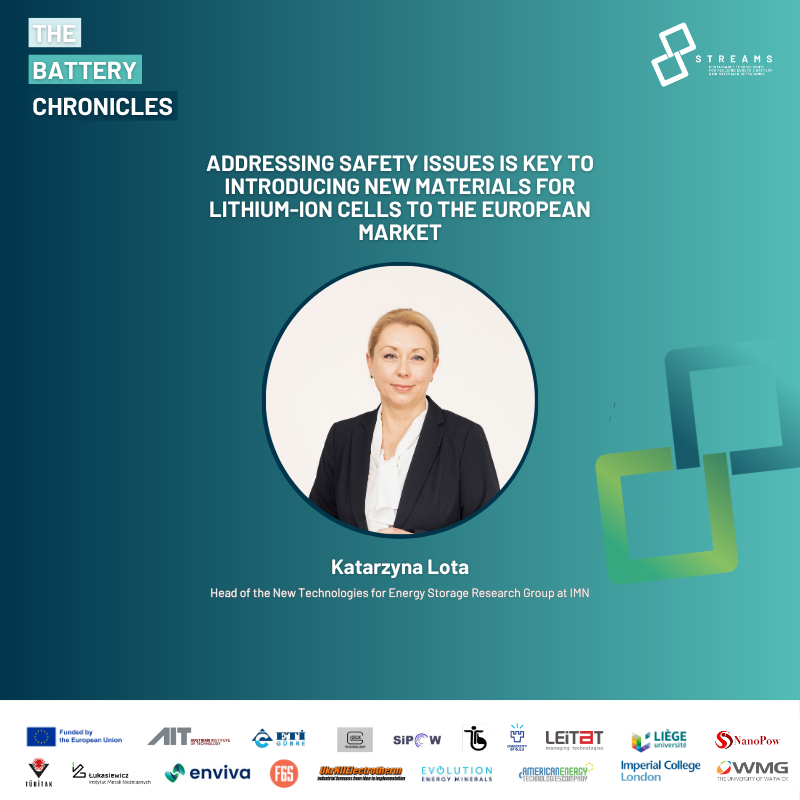Both now and in the future, lithium-ion and post-lithium batteries are considered the most important power source for portable, stationary and traction systems.
Lithium-ion batteries are considered hazardous due to their flammable, toxic and explosive properties. Li-ion are generally safe when used properly. Li-ion can be dangerous if there are manufactured poorly. Safe usage practices significantly reduce risk. Best safety practices include:
-use certified chargers and batteries,
-avoid exposing batteries to heat or moisture,
-do not puncture, crush or incinerate,
-store in a cool, dry place,
-dispose or recycle properly through authorized centres.
Their widespread use necessitates stringent safety testing to prevent malfunctions, which can result in electrolyte leakage and subsequent explosion and fire. Safety issues are paramount, particularly when introducing new materials for lithium-ion cells to the European market. In the case of safety risks, it can be distinguished:
- thermal runaway (chain reactions, potentially leading to fire or explosion),
- physical damage (crushing can cause internal short circuits),
- overcharging/ deep discharging (can damage the battery and increase fire risk),
- improper storage (exposure to high temperatures or direct sunlight can degrade the battery).
For the purposes of dangerous goods regulations, lithium batteries are categorised as lithium-metal (primary) or lithium-ion (secondary). Dedicated testing laboratories carry out detailed inspections of batteries and cells according to standardised procedures before they are put on the market. The Łukasiewicz Research Network – Institute of Non-Ferrous Metals Division in Poznań (formerly the Central Laboratory of Batteries and Cells) is a highly specialised research organisation with many years of experience in the field of chemical power sources. As part of the STREAMS project, the Institute will carry out essential safety tests on the manufactured pouch cells. STREAMS consortium members will also characterise the cells in terms of their electrochemical characteristics, such as long-term cycling and rate capability.
The two most important documents for assessing the safety of battery systems during transport are the United Nations (UN) Test Manual, Section 38.3, and the International Electrotechnical Commission (IEC) Standard 62281. These documents fully define the safety requirements for primary and secondary cells and batteries. UN safety tests are widely considered to be the fundamental global transportation safety testing standards. Cells and batteries must pass the relevant tests for each mode of transport. In general, Europe follows international regulations such as ADR, RID, IATA, ICAO, and IMDG for lithium battery transportation by road, rail, air, and sea.
Both documents (UN Manual of Tests and Criteria, Part III, Subsection 38.3 and IEC 62281) describe the test methods and requirements that battery cells and systems should meet. These demanding tests allow product defects that could cause a hazard to be detected.
Based on the product requirements, a battery may consist of one to over one thousand cells. A cell is defined as a single electrochemical unit consisting of a positive and negative electrode that provides a voltage differential across its terminals. A battery is generally described as two or more cells that are electrically connected and have some form of marking and protective device.
In contrast, the safety of use of cells and energy storage systems is governed by IEC 62133 and IEC 62619. These standards describe tests that simulate intentional and unintentional use failures.
The increasing demand for Li-ion batteries, the presence of critical elements in the system, and safety issues are forcing producers to comply with certain European Union standards and regulations regarding recycling, carbon footprint, safety, and the life cycle of batteries. Battery cell producers must meet further requirements for their products, according to EU Regulation 2023/1542. The regulations state that, for instance, from February 2027, all batteries with a capacity greater than 2 kWh must be electronically registered and bear a battery passport containing a QR code and CE marking. The Regulation (applies to all batteries, including all waste portable batteries, electric vehicle batteries, industrial batteries, starting, lighting and ignition (SLI) batteries (mainly used in vehicles and machinery) and batteries for light means of transport (e.g. electric bikes, e-mopeds, e-scooters). Moreover, the regulation sets ambitious targets for battery collection and recycling. It should be noted that manufacturer and importers must implement due diligence policies to address social and environmental risk in their supply chain. This comprehensive regulation aims to ensure that Li-ion batteries in the EU are produced, used and recycled in a proper manner that prioritizes safety and environmental sustainability.
You can download the full article here.

